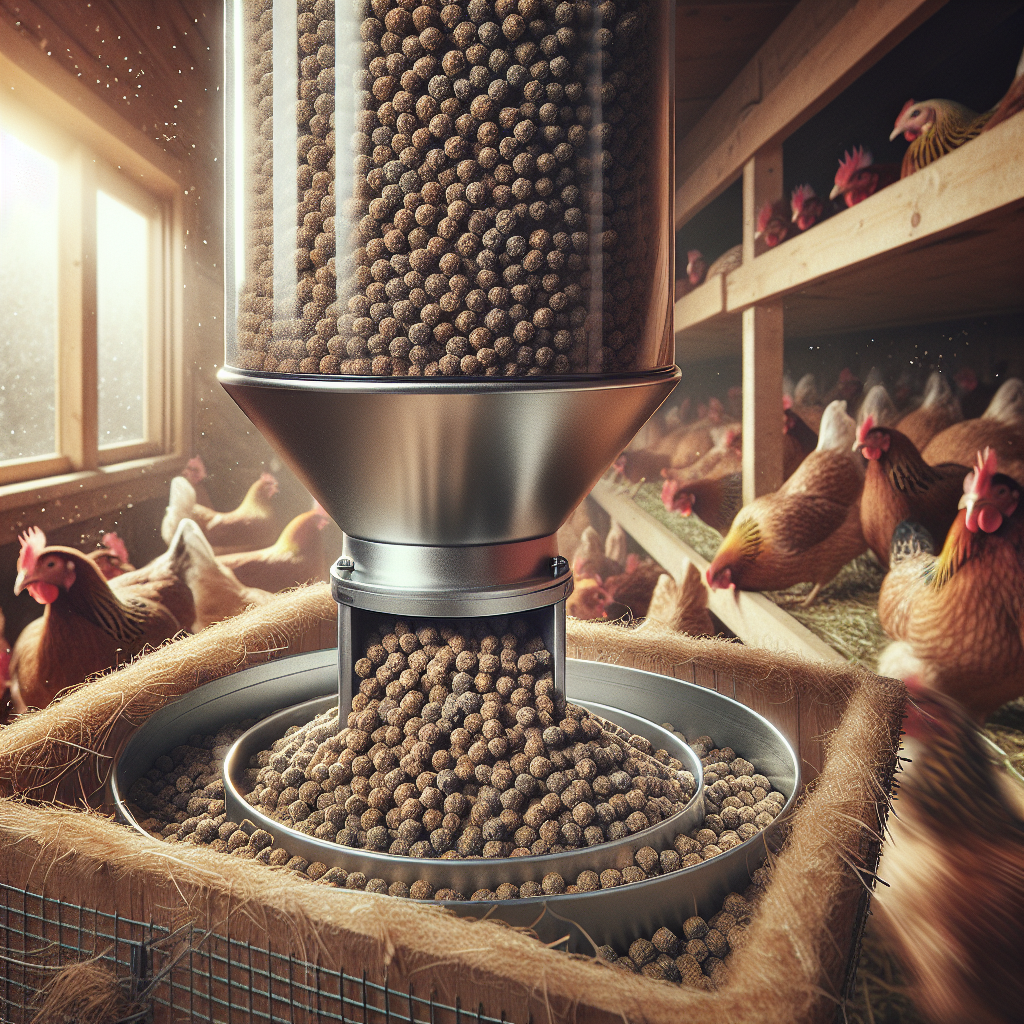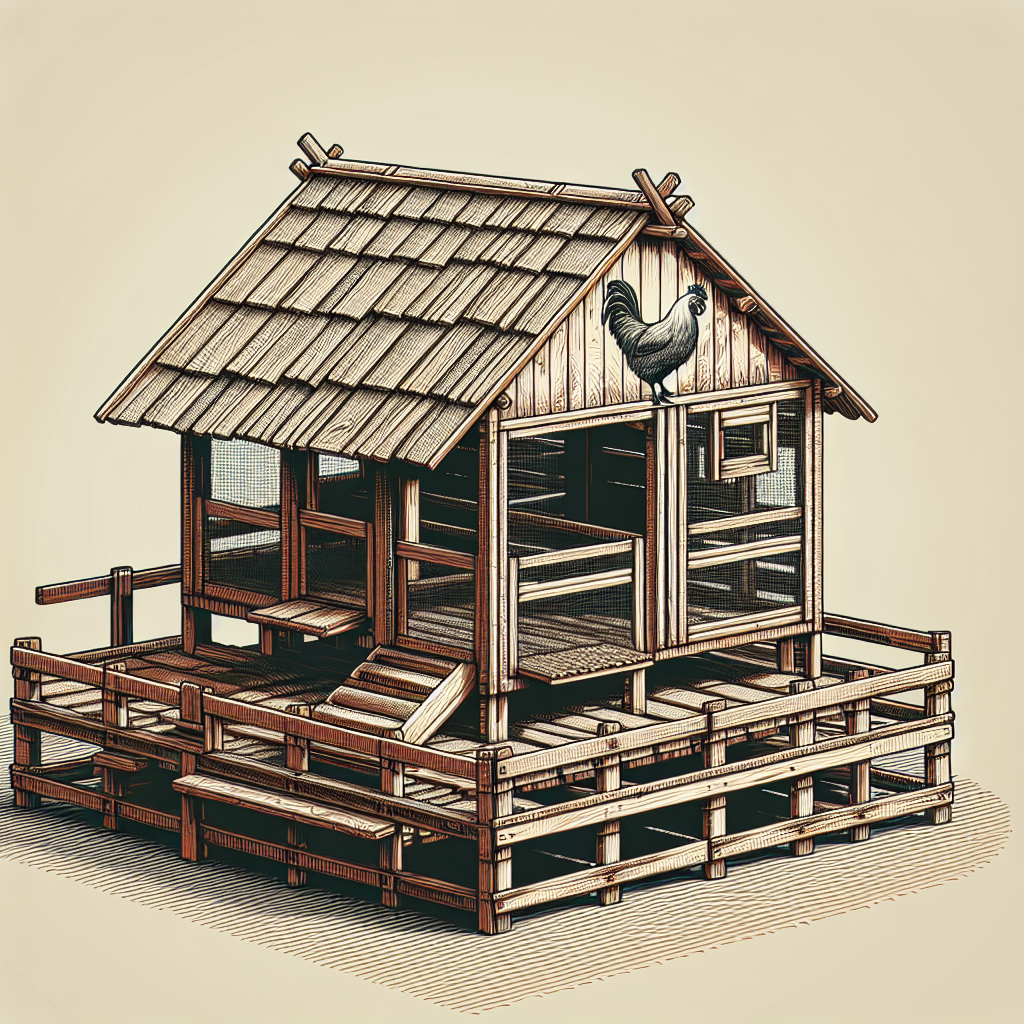Building a chicken coop can be an exciting project, but ensuring ease of cleaning and maintenance is crucial for the long-term success and health of your flock. From choosing the right materials to incorporating thoughtful design elements, there are several steps you can take to make this task a breeze. In this article, you’ll discover handy tips and tricks that will help you create a coop design that is not only functional but also easy to keep clean and maintain. Don’t worry, with these expert suggestions, you’ll be able to give your feathered friends a comfortable and clean home without breaking a sweat! Designing a coop with easy cleaning and maintenance in mind is crucial for keeping your chickens healthy and happy. A well-designed coop will not only make your life easier but also contribute to the overall cleanliness and hygiene of the poultry environment. In this article, we will discuss various aspects to consider when designing a coop that prioritizes easy cleaning and maintenance.
Consider the Size and Layout
The size and layout of your coop play a significant role in ensuring easy cleaning and maintenance. It is important to evaluate your space constraints and plan accordingly. A coop that is too cramped can be difficult to clean and may lead to a buildup of waste and odors. Allow sufficient room for cleaning, so you have easy access to all areas of the coop.
In addition to the cleaning aspect, providing separate areas for different functions can also contribute to the overall efficiency of the coop. Consider allocating specific spaces for nesting, roosting, feeding, and watering to make it easier to maintain cleanliness in each area.
Choose Easy-to-Clean Materials
Selecting the right materials for your coop is essential for easy cleaning and maintenance. Opt for smooth and non-porous surfaces that are easy to wipe down and sanitize. Materials such as plastic, fiberglass, or sealed wood can be excellent choices. Avoid materials that are prone to absorbing moisture or odors, as they can lead to bacterial growth and make cleaning more challenging.
Durability and longevity are also important factors to consider when choosing materials. Your coop should be able to withstand regular cleaning and the elements without deteriorating. Investing in high-quality materials will save you time and money in the long run.
Include Proper Ventilation
Proper ventilation is crucial for maintaining a healthy coop environment and reducing the need for excessive cleaning. Good ventilation ensures sufficient air circulation, which helps remove moisture, odors, and contaminants from the coop. Incorporate vents or windows in your coop design to allow fresh air to enter and stale air to exit.
In some cases, depending on the climate and location, you may need to install ventilation fans to ensure optimal air circulation. Fans can help control temperature and humidity levels, promoting a comfortable and clean environment for the chickens.
Plan for Easy Access and Cleaning
Designing your coop with easy access and cleaning in mind will save you time and effort in the long run. Make sure to include wide entryways and doorways that allow easy passage for both you and your cleaning equipment. This will make it easier to maneuver and effectively clean all areas of the coop.
Ensure sufficient headroom in your coop design, especially if you have larger chicken breeds. This will prevent you from constantly bending down and straining your back while cleaning. Additionally, consider incorporating accessible areas for nest boxes or roosts. Removable nest boxes or easy-to-clean roosts can be a game-changer when it comes to maintaining cleanliness.
Allocate space in your coop for storage of cleaning tools and equipment. Having a designated area to keep brooms, shovels, brushes, and other cleaning supplies will ensure they are easily accessible when needed.
Incorporate Removable Features
To simplify the cleaning process, consider incorporating removable features in your coop design. Utilize removable trays or floors that can be easily taken out and cleaned. This will allow you to thoroughly clean any accumulated debris or waste.
Similarly, removable nest boxes or roosts can make cleaning a breeze. Being able to remove these components makes it easier to access hard-to-reach areas and maintain cleanliness in the coop. Additionally, including easy-to-remove droppings boards or trays will help streamline the cleaning process.
Optimize Waste Management
Proper waste management is crucial for maintaining a clean and healthy coop environment. Design a manure management system that efficiently collects and removes waste. This can include using removable trays or floors, as mentioned earlier, or implementing a system that automatically collects and stores manure.
Create convenient composting areas within or near the coop to properly dispose of collected waste. Composting not only helps reduce waste but also provides valuable fertilizer for your garden or plants. Implementing the deep litter method effectively can also be beneficial in managing waste and reducing the frequency of full cleanouts.
Address Watering and Feeding Systems
Watering and feeding systems need to be designed with cleanliness and ease of maintenance in mind. Installing easy-to-clean waterers and feeders will make your life much easier. Choose options that can be easily disassembled and thoroughly cleaned to ensure the absence of contaminants.
Consider implementing automatic or gravity-fed systems that allow for a continuous supply of clean water and feed. These systems minimize the need for frequent manual refilling and ensure that your chickens always have access to fresh food and water.
It’s also important to ensure adequate space for multiple birds to feed and drink simultaneously. Overcrowded feeding and watering areas can lead to spillage and contamination. Providing sufficient space will help minimize wastage and maintain cleanliness.
Create Adequate Drainage
Proper drainage is essential for preventing standing water and potential health risks. Plan for proper rainwater drainage to avoid water accumulation within the coop or the surrounding area. This can be achieved through the installation of gutters and downspouts, directing the water away from the coop.
Incorporate sloped floors or drainage channels within the coop to facilitate the flow of water and prevent pooling. This will make it easier to clean and prevent the accumulation of stagnant water, which can attract pests and lead to the growth of bacteria or mold.
Identify and avoid areas that are prone to flooding when selecting the location for your coop. Proper drainage will minimize the risk of water damage and ensure a clean and dry environment for your chickens.
Account for Pest Prevention
Pest prevention is an important aspect of coop design for overall cleanliness and the health of your birds. Include measures to deter common pests such as rodents or insects. Design your coop with features like secure doors and windows to prevent unwanted entry.
Consider incorporating wire mesh or hardware cloth to cover openings and vents, preventing pests from gaining access. Regularly inspect your coop for any signs of pests and promptly address them to maintain a clean and pest-free environment.
Consider Future Needs and Expansion
When designing your coop, it’s essential to consider future needs and potential expansion. Allowing room for future expansion or the addition of more birds will save you the hassle of redesigning or rebuilding the coop later on. Anticipating and accommodating future growth can be as simple as allocating additional space or incorporating modular components that can be easily upgraded.
Flexibility is key when it comes to meeting changing needs. Design your coop in a way that allows for easy upgrades or modifications. Consider the ease of adding or removing features to adapt to evolving circumstances.
In conclusion, designing a coop with easy cleaning and maintenance in mind is key to ensuring the health and well-being of your chickens. By carefully considering the size and layout, choosing easy-to-clean materials, providing proper ventilation, planning for easy access and cleaning, incorporating removable features, optimizing waste management, addressing watering and feeding systems, creating adequate drainage, accounting for pest prevention, and considering future needs and expansion, you can create a coop that is not only efficient to maintain but also provides a clean and comfortable environment for your feathered friends. Happy coop designing!




